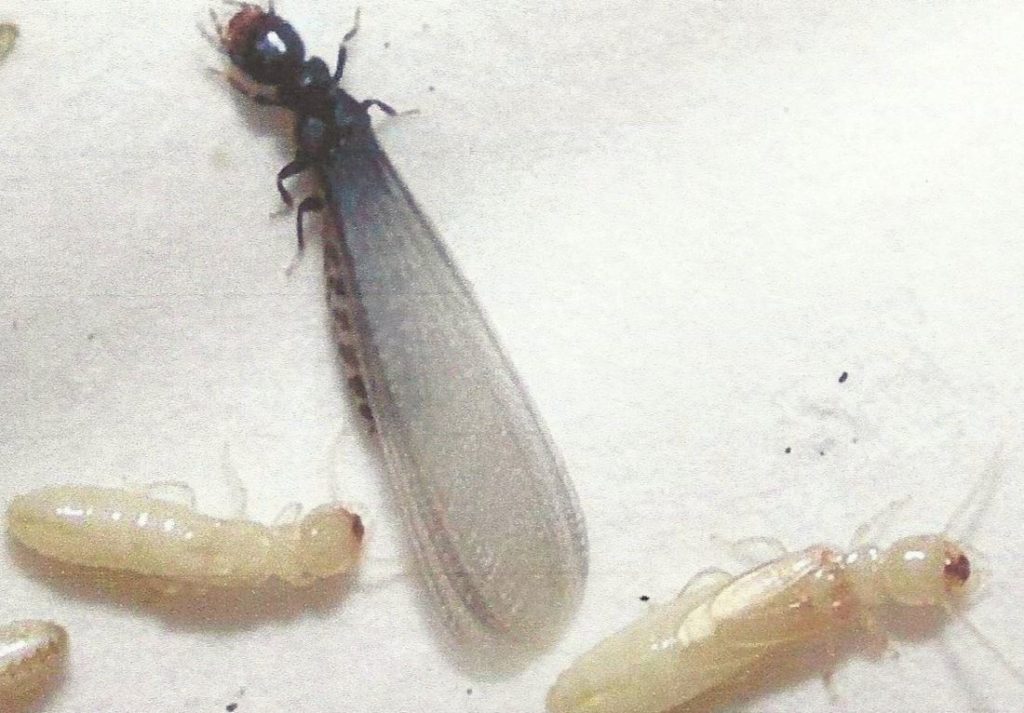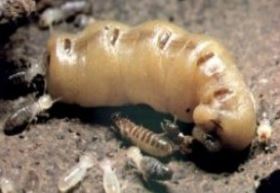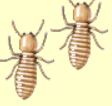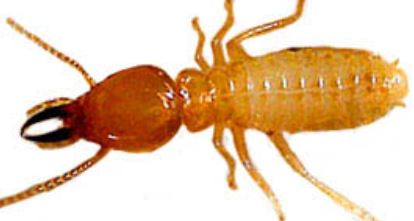Termites in Mt Kisco & Westchester County, New York
It is critical to identify the species of destructive termites to formulate an appropriate control program. The main destructive termite species in
Termites in Mt Kisco & Westchester County, New York is the Eastern subterranean termite.
AREAS OF HIGH RISK IN Westchester County, NEW YORK include Mt Kisco, NY 10549, Westchester County, NY, Millwood, NY, Crotonville, NY 10562, Briarcliff Manor, NY, Pleasantville, NY 10570, Croton-On-Hudson, NY 10520, Cortlandt Manor, NY 10567, Peekskill, NY, Bedford Hills, NY 10507, Katonah, NY 10536, Thornwood, NY, Cortland, NY 13045, Buchanan, NY 10511, Montrose, NY, Ossining, NY, Sleepy Hollow, NY 10591, Tarrytown, NY, Elmsford, NY, White Plains, NY, Rye Brook, NY, Rye, NY, Port Chester, NY 10573, Hartsdale, NY, Scarsdale, NY 10583, Eastchester, NY, Ardsley, NY 10502, Ardsley-On-Hudson, Irvington, NY, Baldwin Place, NY 10541, Dobbs Ferry, NY, Harrison, NY, Jefferson Valley-Yorktown, NY, Yorktown Heights, NY 10598, Mamaroneck, NY, Bronxville, NY, Village of Pelham, NY, Somers, NY, Tuckahoe, NY, Yonkers, NY, Larchmont, NY, New Rochelle, NY, City Island, The Bronx, NY,

Identification of Swarmers and Soldiers:
Swarming generally occurs during the spring but occasionally a few smaller swarms may occur during the summer. Swarming most often occurs during the morning following a warm rain shower whereby the soil temperature is around 70°F.
Call (914)-428-4077 Now
Identification of Timber Damage
Eastern subterranean termites are highly destructive to douglas fir and other common building timbers. They can rapidly eat out the internal sections of structural timbers – devouring mainly the spring wood, and preferring to leave the harder summer wood sections.
As`a result, infested timbers are often left as a thin shell with a honey-comb of layered hollow sections packed with moist soil. These termites love a moist dark damp environment – it is essential for their survival – discussed in detail under Biology of Subterranean Termites – later on.
Destructive nature of Eastern subterranean termites
The Eastern subterranean termite is a serious economic timber pest causing millions of dollars of damage throughout the areas where it is located. It is estimated that more than 1 in 5 homes in the high activity areas, been or will be attacked at sometime by these voracious little insects.
Biology of eastern subterranean termites
Within a termite nest there are members of different castes, each with a different role to perform and all interdependent upon each other for survival of the colony. These include the queen, king, the winged reproductive (young kings and queens), soldier and worker termites.
The queen termite is an egg laying machine; her body is enormous compared to her off-spring; she can live more than 25 years and produce more that 2,000 eggs a day.
The king and queen live in a central chamber and are tended by the workers.
The workers are by far the largest caste in the eastern subterranean termite colony and 
the one that does the damage; they are a creamy translucent colour, soft bodied and carry out all work in the nest, including gathering food (timber and other cellulose); constructing tunnels; repairing and enlarging the colony nest; grooming each other and feeding the soldiers, the king, queen and also caring for the young nymphs until mature.
Call (914)-428-4077 Now Termite exterminator, Pest control Near me, Mt Kisco, Rye, NY & Westchester County, New York and surrounding
| IDENTIFICATION: Eastern subterranean worker termites are small in size, about half the size of match-head or 1/8″ long and are soft bodied insects. They have no wings, are sterile, blind and work 24 hours a day for their entire 2 year life span. |
| The soldiers are the defenders of the colony, particularly against marauding ants – with whom they have engaged in a relentless war lasting 250 million years. |

IDENTIFICATION: the soldiers have an orange coloured rectangular armored head with mandibulate pinchers which they use to crush the ants. On their forehead is a fontanelle (frontal gland pore) used to emit a sticky latex to ensnare the ants. Its mandibles are curved at about 70~90 degrees. The body of the Eastern subterranean termite is flat and almost as wide as the head, with the width of approx 1/32”.
The soldier termite is usually the first to be seen in large numbers when any active termite workings (mud shelter tubes or damaged timber) are opened. Soldier termites will rush out to guard the opening whilst worker termites repair the breach.
The swarmers (reproductives) are called “alates”
and are commonly seen when they swarm during daylight; they have eyes; are poor fliers but are swept along by the wind; they land, drop their wings, find a mate to become king and queen of a new termite colony.
IDENTIFICATION: The eastern subteranean termite swarmers are about 3/8″ long (including wings) with a dark brown body and a small fontanelle (frontal gland pore) on its head. Their wings are brownish grey with two dark solid veins along the forefront of the front wings. The front wing is distinctly larger than hind wing.
WHEN DO THEY SWARM? In the northern part of their range, swarming takes place in the spring, but without rain. In the southern areas, swarming usually follows rain. The swarmers are emitted in their thousands when a mature termite nest is large and well established.
Eastern subterranean termites swarm in large numbers over a wide area to find a mate from another colony nest to start up a new colony. A suitable location for nesting should provide moisture and a readily available timber food source close by.
Colony nest development is slow in the first few months, with the egg-laying capacity of the new queen termite peaking after a few years, producing up to 10,000 offspring a year. The queen may live for many years and workers up to two years. The swarmers are emitted in their thousands when a mature termite nest is large and well established. Swarmers are usually produced after this period and are an indication a large termite nest is in the vicinity, a sure danger sign and a warning that professional protection is required.
Several years are required before the termite colony reaches the typically mature size. In some locations an Eastern subterranean termite colony can contain several million termites foraging over a wide area (up to 12,000 square feet) and actively feeding on trees and freestanding poles as well as buildings and other timber structures.
The colony nests of Eastern subterranean termites are usually located in the ground below the frost line, but above the water table. Mud galleries or “shelter tubes” are constructed across hard objects in order to gain access to timber food sources.
Eastern subterranean termites constantly search for new food sources. They are known to enter buildings through cracks in concrete flooring or to travel under parquetry or tile flooring through gaps of less than 1/16″ wide.
Where moisture regularly collects inside the wall or other cavities of a building, say from faulty plumbing or broken roof tiles, the Eastern subterranean termite can develop a subsidiary colony nest which may not require contact with the ground to ensure it’s survival.
They build a central colony nest from which they construct underground tunnels that radiate within a 100 yard radius from a central colony nest in search of a timber (cellulose) food source.
Termites often build such nests if moisture is allowed to regularly collects inside the wall cavity, say from leaking pipes, shower recess, faulty plumbing, guttering, broken roof tiles, etc. Termites travel in humidified mud-shelter tubes or galleries… https://24hourpestcontrolnearme.com/pest-control-near-me/https://en.wikipedia.org/wiki/Eastern_subterranean_termite
24 Hour Pest Control Near Me Expert in Termite Treatment
Call (914)-428-4077 Now Termite exterminator, Pest control Near me, Mt Kisco, Rye, NY & Westchester County, New York and surrounding areas
